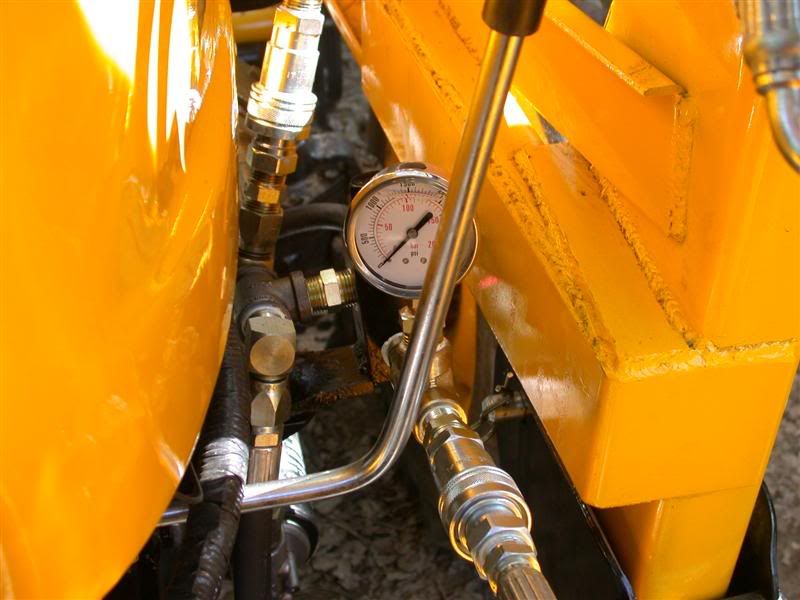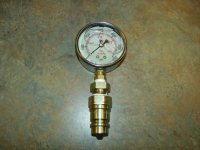Yeah, like Kenny said that one is perfect.
That idea of making a QD gauge is a really good idea. I wish I would've thought of that.
I ended up going the longer route but it was very helpful to me.
I installed a pressure gauge on my wife's Jinma right into the hydraulic system. I understood her system had no pressure relief valve of its own. Only on the control valves in the system had PR in them. So if the valves were ever taken out of the loop (such as when the loader is removed) then the pump could dead head and get ruined if the "in and out" were not connected together for some reason.
This being my wife's tractor, I thought that was a pretty good reason.

Not only that, but I wanted to check her system pressure BEFORE setting each valve's individual PR. So I installed a PR valve right on the high pressure output side of the pump and a gauge right after that. The new PR valve has a return to sump when relieving. After the gauge I installed a QD to hook up to the loader valve and so forth.


The good part about this is now I can disconnect the loader valve at the QD and dead head the pump. By doing that, I can set the main system pressure exactly where I wanted, according to the manufacturer's specs. The pump is now protected by that new PR valve, which allows me to do that. Then, I plug in the QD which connects all the control valves and set the pressure relief on each valve individually using the same gauge. I set them just below the main system pressure.
I didn't do that on my Kama but did plumb a gauge into the system. So I can still set the PR of each valve, but I have no idea what my system pressure really is. I know all that is a lot more work and expense, but the good part is if for some reason I feel my hydraulics are lagging I check the gauge. Sometimes the PR spring weakens over time and needs to be readjusted. Now I can recognize if that happens and make the adjustment.





